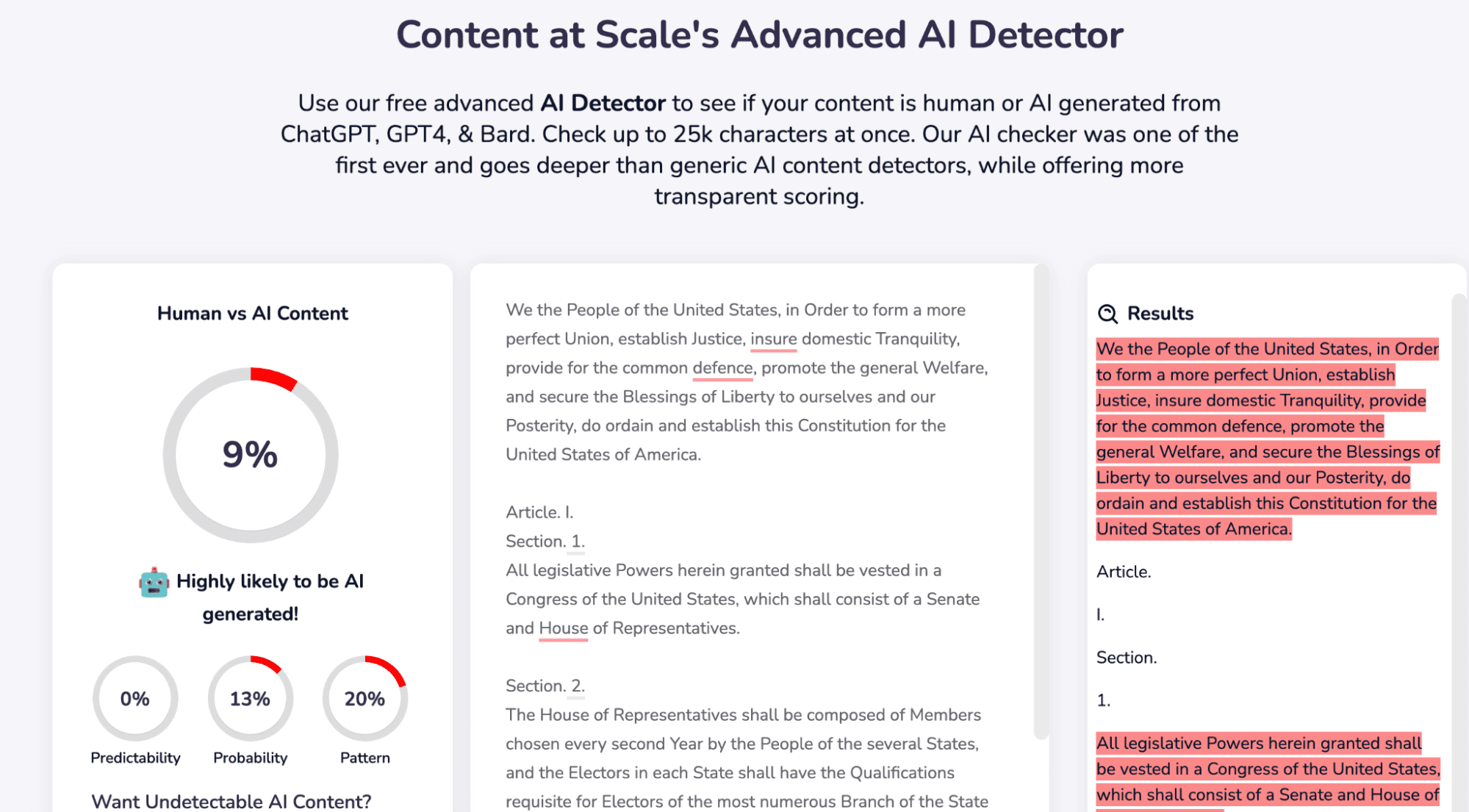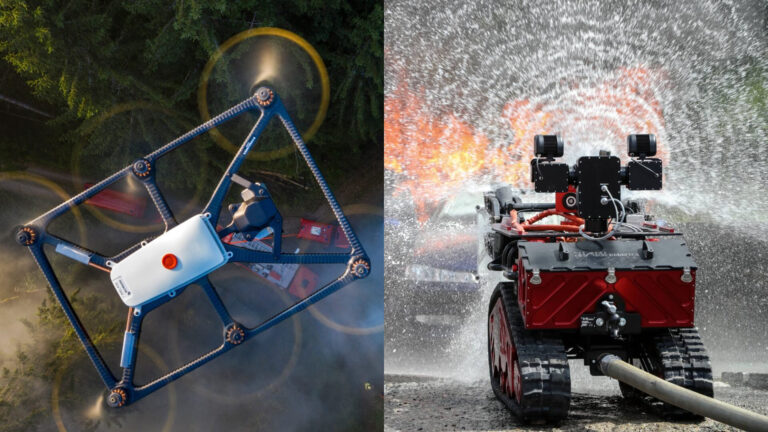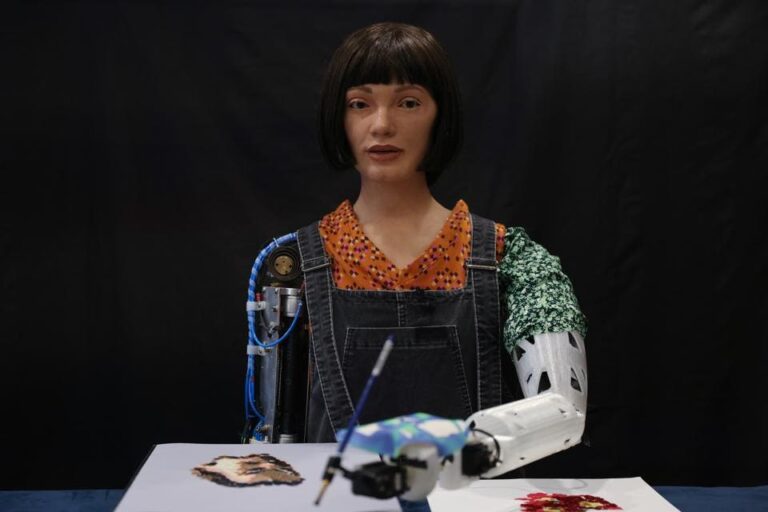AI detectors analyze text patterns and compare them with known AI-generated content. They use algorithms to identify non-human writing styles.
AI detectors play a crucial role in distinguishing human-written text from AI-generated content. These tools scan for specific linguistic features, inconsistencies, and unnatural phrasing that AI often produces. By leveraging advanced algorithms and machine learning models, they can identify subtle differences in writing styles.
This helps ensure content authenticity and maintain trust in various fields like academia, journalism, and digital marketing. As AI-generated content becomes more sophisticated, the importance of accurate detection tools grows. Understanding how these detectors work can help individuals and organizations safeguard against misinformation and uphold content integrity.
Introduction To Ai Detectors
AI detectors are tools that use artificial intelligence to identify patterns. These patterns help in detecting anomalies, fraud, or specific items. AI detectors are used in various industries to improve accuracy and efficiency. They can process vast amounts of data quickly and make decisions based on that data.
The Rise Of Ai In Detection
Artificial intelligence has grown rapidly in recent years. This growth has led to the development of AI detectors. These tools have become essential in many fields. They are used in healthcare, finance, cybersecurity, and more. AI detectors can learn from data and improve their accuracy over time. This makes them more reliable than traditional methods.
Purpose Of Ai Detectors
The main purpose of AI detectors is to identify specific patterns. They can detect fraud, diagnose diseases, and monitor networks. AI detectors help in making quick and accurate decisions. They reduce the need for human intervention, saving time and resources.
| Industry | Use of AI Detectors |
|---|---|
| Healthcare | Diagnosing diseases from medical images |
| Finance | Detecting fraudulent transactions |
| Cybersecurity | Monitoring network traffic for threats |
AI detectors are also used in retail, transport, and manufacturing. In retail, they help in predicting customer behavior. In transport, they monitor vehicle conditions and traffic patterns. In manufacturing, they detect defects in products.
- Healthcare: Early diagnosis and treatment
- Finance: Preventing fraud and ensuring security
- Cybersecurity: Protecting data and systems
AI detectors offer many benefits. They improve accuracy and reduce errors. They handle large volumes of data quickly. They also adapt and learn, making them more effective over time.

Core Technologies Behind Ai Detectors
AI detectors are powerful tools that can identify patterns and anomalies. They rely on several core technologies to function effectively. These include machine learning, neural networks, and natural language processing. Let’s explore each of these technologies in detail.
Machine Learning Basics
Machine learning is a subset of artificial intelligence. It allows systems to learn from data. These systems improve over time without being programmed explicitly. Algorithms and models are key components here.
- Algorithms: Step-by-step procedures for calculations.
- Models: Representations of the data learned by the system.
In AI detectors, machine learning models are trained on large datasets. They identify patterns and make predictions based on this training.
Neural Networks At Work
Neural networks mimic the human brain. They consist of layers of neurons. Each neuron processes a piece of information. These layers are known as input, hidden, and output layers.
| Layer Type | Function |
|---|---|
| Input Layer | Receives initial data |
| Hidden Layer | Processes and transforms data |
| Output Layer | Produces the final result |
In AI detectors, neural networks analyze complex data. They find deep patterns that simpler models might miss.
Natural Language Processing For Detection
Natural Language Processing (NLP) helps machines understand human language. NLP is crucial for AI detectors that process text data. Tokenization and sentiment analysis are important parts of NLP.
- Tokenization: Breaking down text into smaller parts.
- Sentiment Analysis: Determining the emotion behind the text.
AI detectors use NLP to analyze text for specific words or phrases. This helps in identifying spam, fraud, or anomalies in text data.
Types Of Ai Detectors
AI detectors help identify patterns that are not easy for humans to see. They are widely used in various fields. Here are some common types of AI detectors.
Plagiarism Checkers
Plagiarism checkers help find copied content in texts. They scan documents and compare them with a large database. These tools highlight matching texts and provide a similarity score. They are widely used in schools and by content creators. Popular plagiarism checkers include Turnitin and Grammarly.
Fake News Identifiers
Fake news identifiers spot false information online. They analyze articles for signs of fake news. These tools check the source, writing style, and factual accuracy. They also use machine learning to improve over time. Examples of these tools are NewsGuard and FactMata.
Deepfake Recognizers
Deepfake recognizers detect altered images and videos. They look for inconsistencies in the media. These tools analyze facial movements and audio to spot fakes. They are important for security and media integrity. Notable deepfake recognizers include Deepware and Sensity.
| Type | Function | Examples |
|---|---|---|
| Plagiarism Checkers | Find copied content | Turnitin, Grammarly |
| Fake News Identifiers | Spot false information | NewsGuard, FactMata |
| Deepfake Recognizers | Detect altered media | Deepware, Sensity |

The Process: How Ai Detectors Operate
AI detectors have revolutionized various industries by providing accurate and efficient detection capabilities. Understanding how these detectors work can shed light on their effectiveness and potential applications. The process involves several key steps, including data collection and preparation, training the AI models, and finally, detection and reporting.
Data Collection And Preparation
The first step is data collection. Large amounts of data are gathered from different sources. This data can come from sensors, cameras, or online databases. The quality of the data is crucial for accurate detection.
After collection, data goes through preparation. This involves cleaning, organizing, and labeling the data. Clean data ensures the AI can learn effectively. Properly labeled data helps in accurate model training.
Training The Ai Models
Once the data is ready, the next step is training the AI models. This involves feeding the prepared data into the AI system. The AI uses this data to learn patterns and make predictions.
Training involves multiple iterations to improve accuracy. The AI adjusts its algorithms based on the data it receives. This process continues until the AI achieves a high level of accuracy.
Detection And Reporting
After training, the AI system moves to the detection and reporting phase. The AI applies its learned patterns to new data. It identifies anomalies, patterns, or specific items based on its training.
Once detection occurs, the system generates a report. This report can be in different formats like text, graphs, or alerts. Reports help users understand the findings and take necessary actions.
| Step | Description |
|---|---|
| Data Collection | Gathering data from various sources |
| Data Preparation | Cleaning, organizing, and labeling the data |
| Training | Feeding data into the AI system for learning |
| Detection | Applying learned patterns to new data |
| Reporting | Generating reports based on detected information |
Challenges In Ai Detection
AI detection faces many challenges today. These challenges impact its effectiveness. Understanding these issues helps improve AI systems.
Dealing With Evolving Threats
AI threats change quickly. Hackers create new ways to trick AI. The system must learn to detect these new threats.
Staying ahead is hard. AI needs constant updates. Regular training helps, but it takes time.
Accuracy And False Positives
AI must be accurate. It needs to detect real threats. False positives are a big problem.
A false positive means the system detects a threat that is not real. This can cause panic and waste resources.
Balancing accuracy and false positives is crucial. It ensures the system is reliable.
Ethical Considerations
AI detection raises ethical questions. Privacy is a major concern. AI systems often collect personal data.
There are rules to protect privacy. AI must follow these rules. It should not misuse personal data.
Another issue is bias. AI can be biased if not trained well. This can lead to unfair detection.
Ensuring AI is fair and ethical is key. It builds trust in AI systems.

Case Studies: Ai Detectors In Action
AI detectors are transforming the world. They help in various fields. Let’s explore how they work in real-life situations.
Combating Academic Dishonesty
Universities use AI detectors to spot plagiarism in student papers. These tools scan documents for copied text. They compare it against a large database. The AI detector highlights any matches. This ensures academic integrity.
AI can also detect cheating during online exams. It monitors student behavior through webcams. Suspicious activities trigger alerts. This helps maintain fair testing environments.
Identifying Manipulated Media
AI detectors are crucial for spotting fake images and videos. They analyze pixels and metadata. The AI looks for inconsistencies. These can indicate tampering. This technology helps in verifying news and social media posts.
For example, AI can detect deepfakes. These are videos where faces are swapped. The AI looks for unnatural movements and other signs of manipulation. This helps in maintaining trust in digital media.
Monitoring Social Media For Fake News
AI detectors scan social media platforms for fake news. They analyze text and images. The AI compares the content with verified sources. It flags any discrepancies. This helps in curbing misinformation.
AI also monitors user behavior. It identifies patterns associated with fake news spreaders. This information helps social media companies take action. They can suspend or ban accounts spreading false information.
| Use Case | AI Detector Function |
|---|---|
| Academic Dishonesty | Plagiarism detection, online exam monitoring |
| Manipulated Media | Spotting fake images, deepfake detection |
| Social Media | Fake news identification, user behavior monitoring |
The Future Of Ai Detection
The future of AI detection holds immense promise and rapid evolution. AI detectors are becoming more sophisticated and integral in various sectors. From cybersecurity to healthcare, the potential applications are vast. Explore the advancements and integration possibilities below.
Advancements On The Horizon
AI detection technology is improving at an unprecedented rate. Machine learning algorithms are becoming more precise. Deep learning models enhance the accuracy of detections. Natural language processing (NLP) allows better understanding of human language nuances.
These advancements lead to faster and more reliable AI detection systems. Future models will be able to predict and prevent threats before they occur. This proactive approach will revolutionize many industries.
Integrating Ai Detectors With Other Technologies
AI detectors can integrate with other emerging technologies. Blockchain technology ensures data integrity and security. Internet of Things (IoT) devices can provide real-time data for AI detectors. This integration enhances the efficiency and effectiveness of AI detection systems.
For example, in healthcare, AI detectors can analyze patient data from IoT devices. This helps in early diagnosis and treatment planning. In cybersecurity, AI detectors can work with blockchain to secure data transactions.
Here is a table showcasing potential integrations:
| Technology | Benefits |
|---|---|
| Blockchain | Enhanced security and data integrity |
| IoT | Real-time data for better analysis |
| Big Data | Improved decision-making with large datasets |
The Role Of Human Oversight
Despite advancements, human oversight remains crucial in AI detection. Humans can provide ethical and moral guidance. They can also ensure AI systems do not develop biases.
Human oversight helps in validating AI detections. It ensures that AI decisions align with human values. Regular audits and monitoring of AI systems are essential. This ensures they function as intended.
Here are some key points about human oversight:
- Ensures ethical use of AI
- Prevents biases in AI detections
- Validates AI decisions
Conclusion: The Impact Of Ai Detectors
AI detectors have revolutionized our digital landscape. They ensure safe and trustworthy online interactions. This technology affects many areas of our lives. Below, we explore its specific impacts.
Enhancing Digital Trust
AI detectors play a key role in enhancing digital trust. They help identify and block malicious activities. This includes spam, phishing, and fake news. Users feel more secure and confident online.
People now trust online platforms more. Reliable information becomes easier to access. This leads to a safer internet experience for everyone.
Empowering Organizations And Individuals
Organizations benefit greatly from AI detectors. They protect sensitive data from cyber threats. Companies can focus on their core activities without constant security concerns.
| Benefit | Outcome |
|---|---|
| Data Protection | Reduced risk of data breaches |
| Operational Efficiency | Improved focus on core activities |
Individuals also gain from AI detectors. They get real-time alerts about potential threats. This helps them take immediate action to protect their data.
The Ongoing Journey
The journey of AI detectors is ongoing. Continuous advancements are being made. These improvements ensure more robust security measures.
We will see even smarter AI detectors in the future. These will offer higher accuracy and faster response times. The journey is far from over, and the potential is vast.
Frequently Asked Questions
How Do Ai Detectors Detect Ai?
AI detectors identify AI by analyzing patterns, syntax, and word choices. They compare these elements to known human writing.
How To Trick Ai Content Detectors?
Avoid repetitive patterns. Use varied sentence structures. Incorporate personal anecdotes. Add human emotions and opinions. Edit and proofread manually.
Is The Ai Content Detector Accurate?
AI content detectors are generally accurate, but not perfect. They can sometimes misidentify human-written text as AI-generated. Always review results critically.
Why Do Ai Detectors Say My Writing Is Ai?
AI detectors may flag your writing as AI due to patterns, structure, or word choice that resemble AI-generated content. Try varying sentence lengths and using more unique phrases.
Conclusion
Understanding how AI detectors work is crucial for leveraging their benefits. They analyze data patterns to identify anomalies effectively. These systems enhance security, efficiency, and decision-making processes. As AI technology evolves, detectors will continue to improve, offering even more accurate and reliable solutions.
Stay informed to make the most of these advancements.






